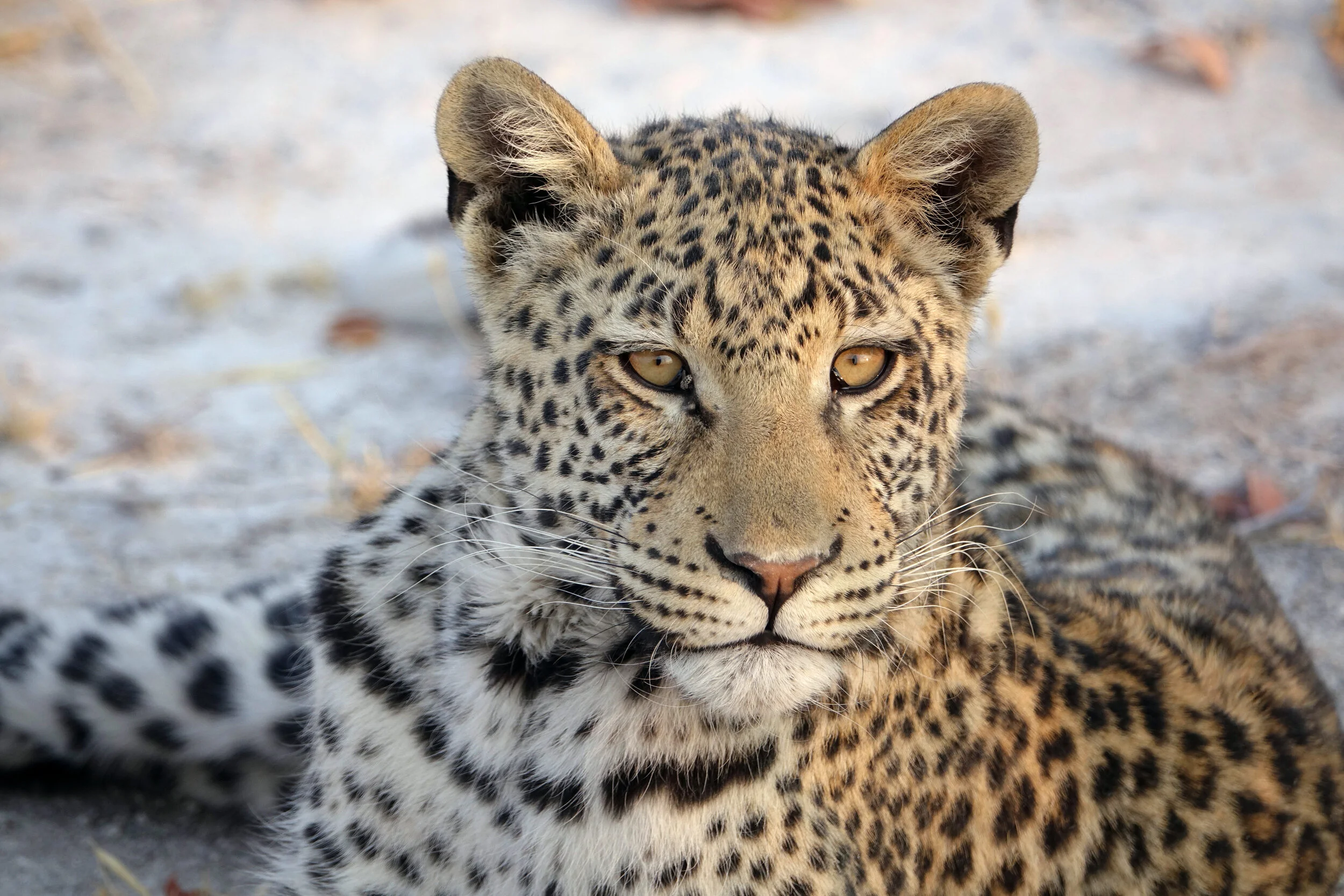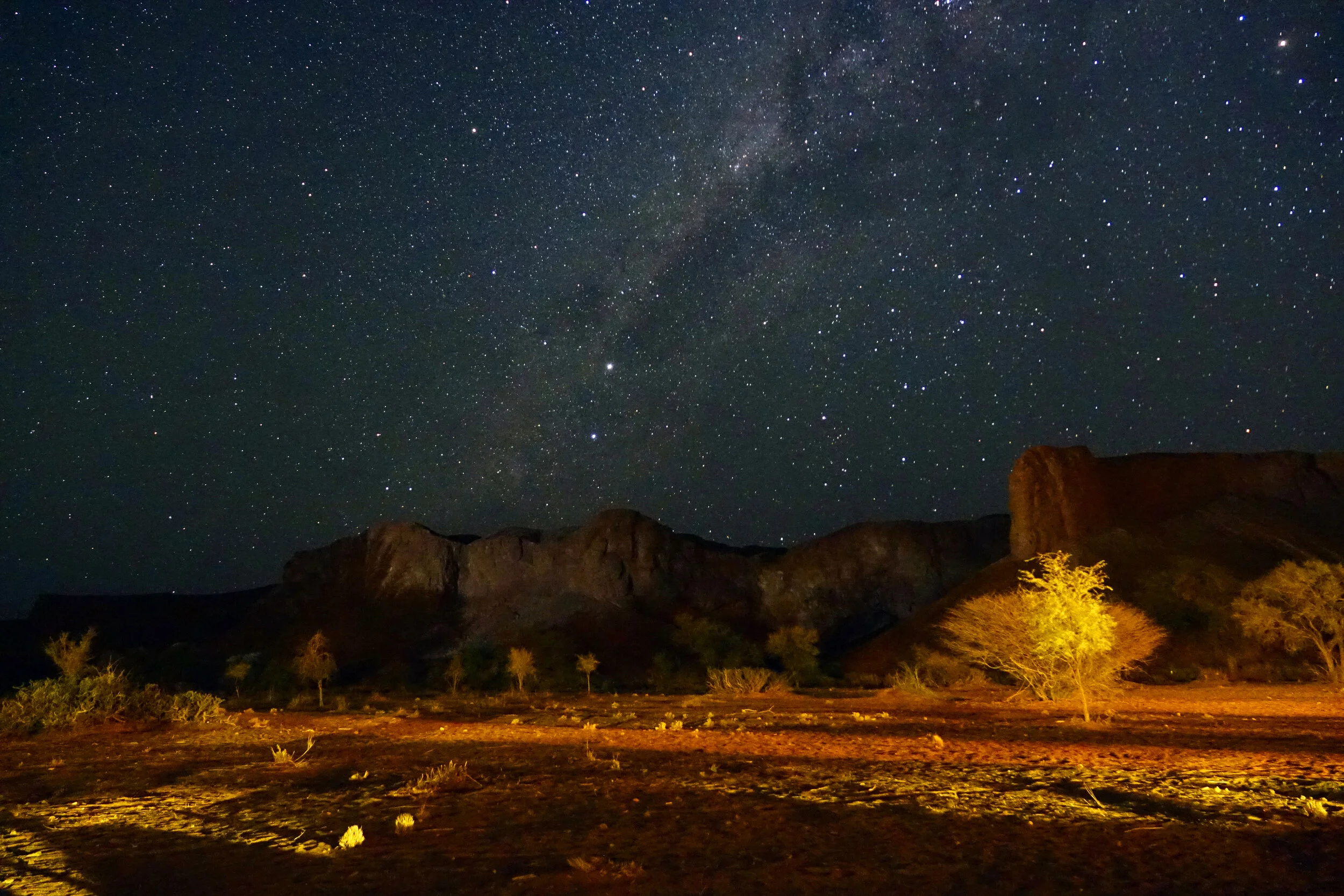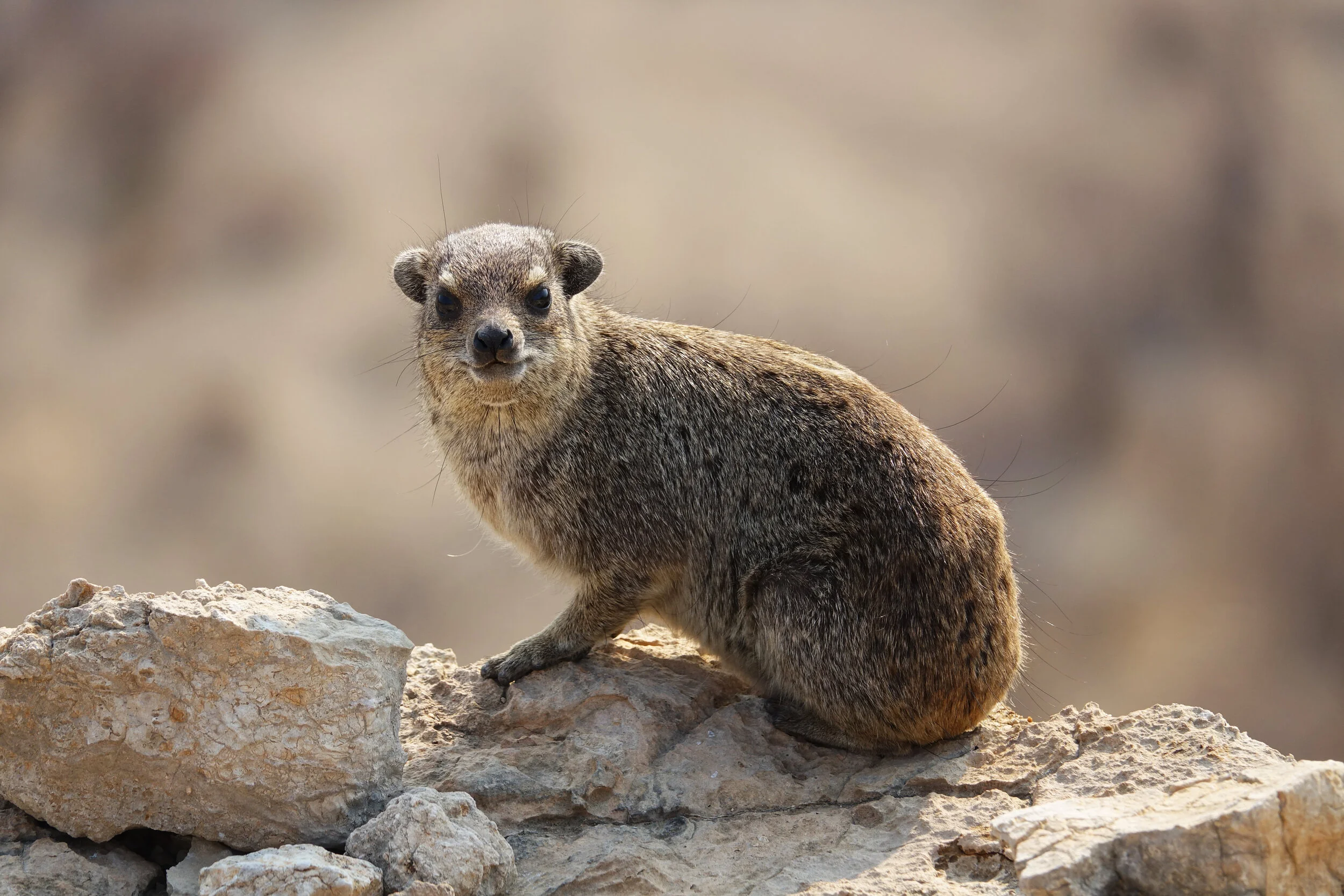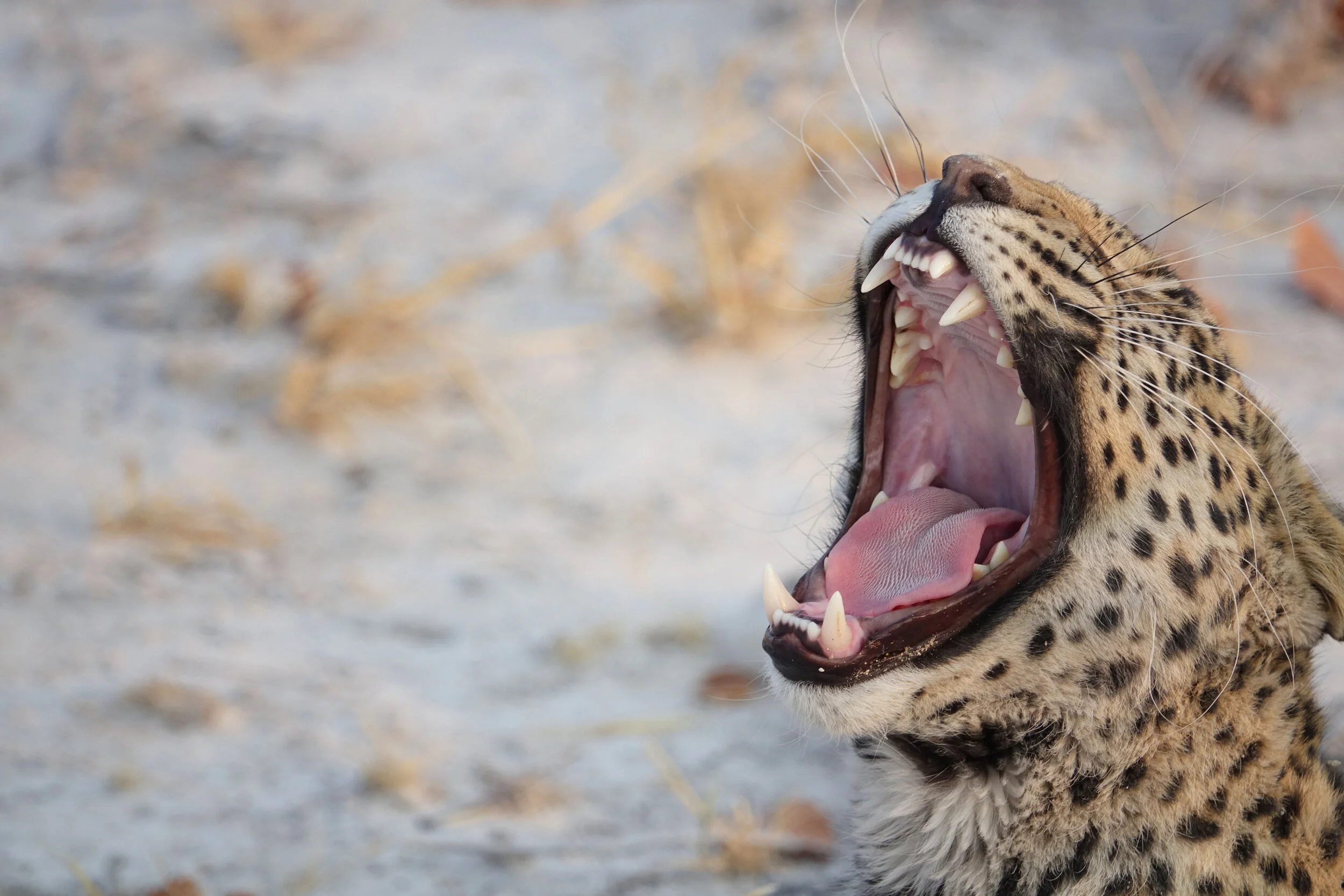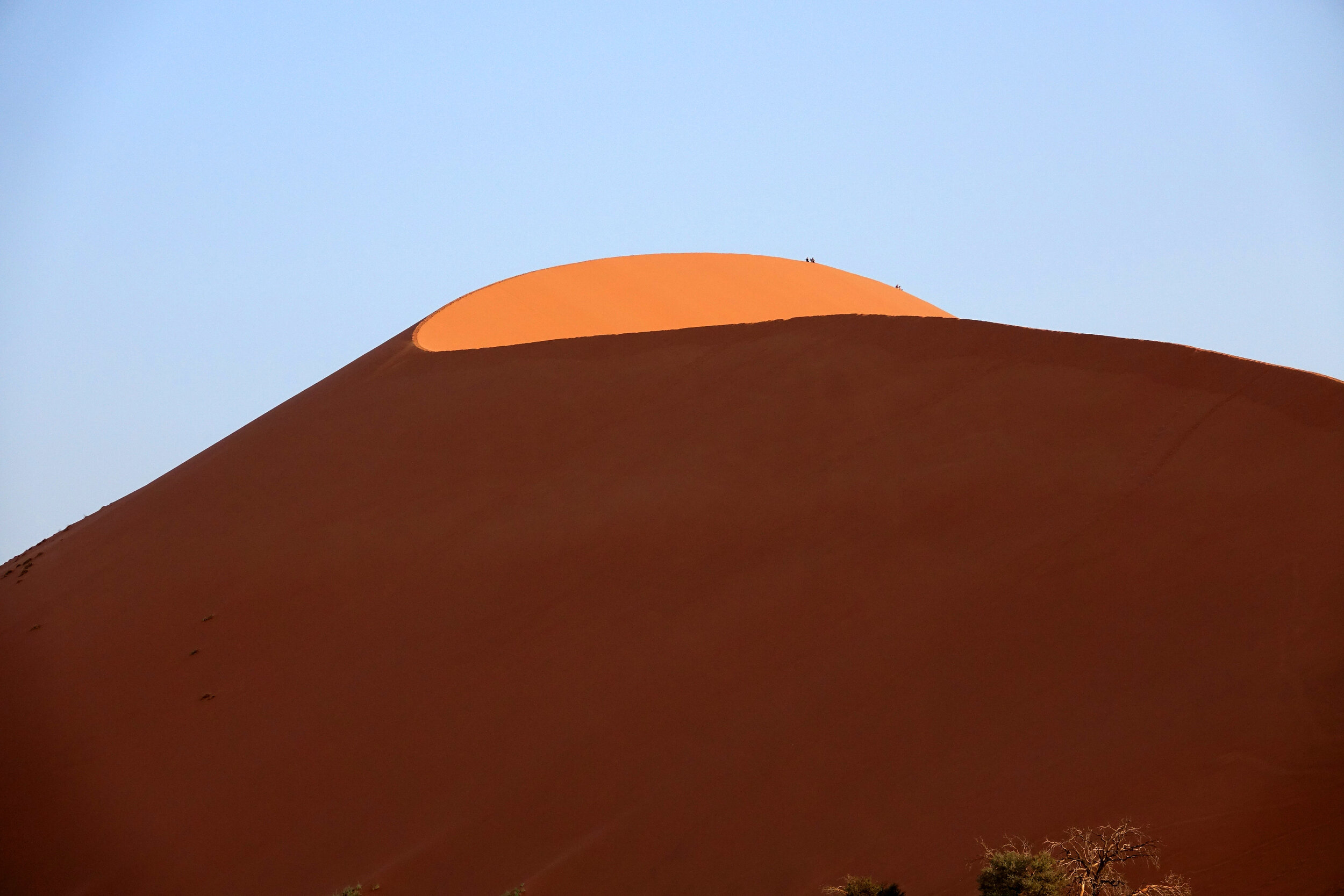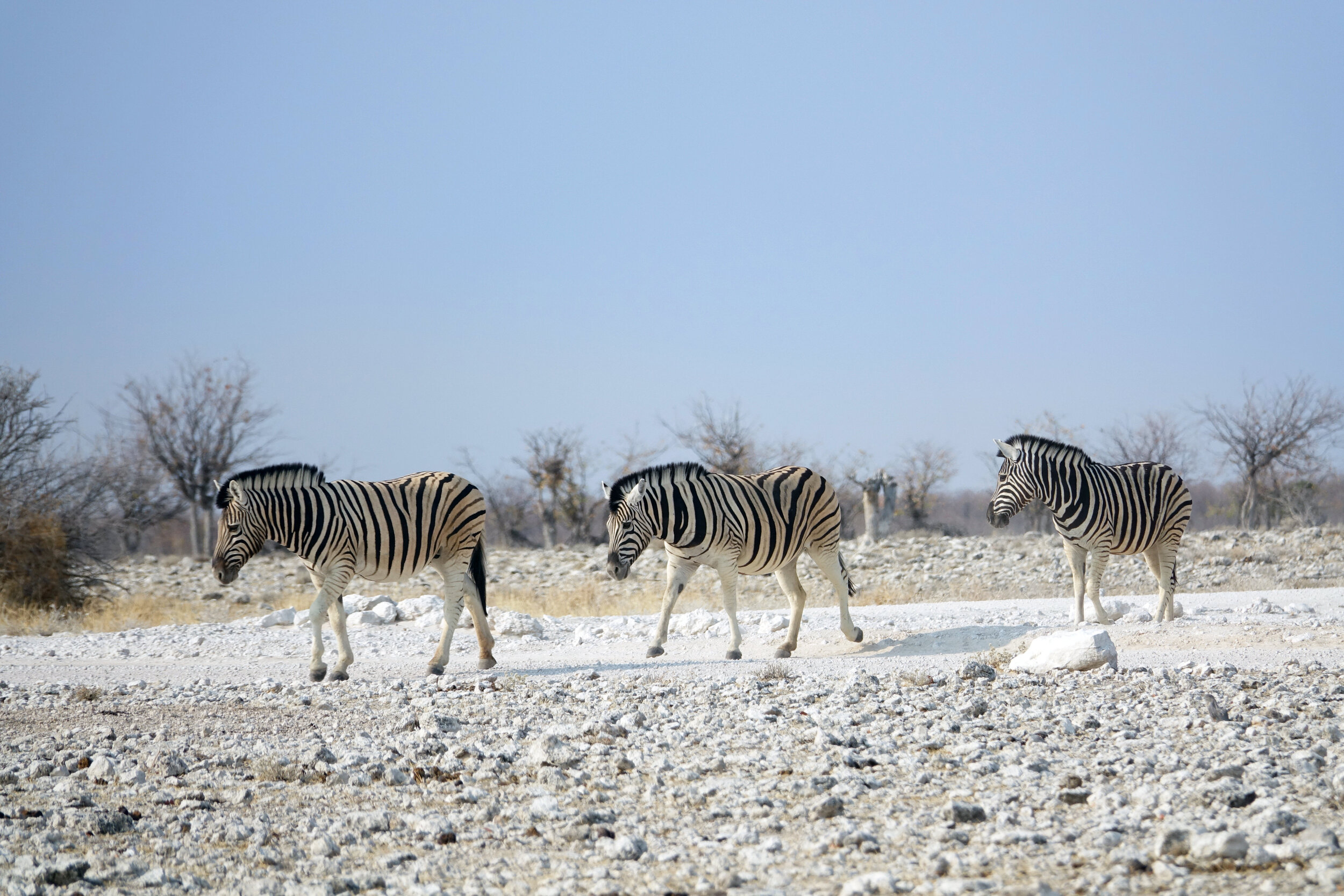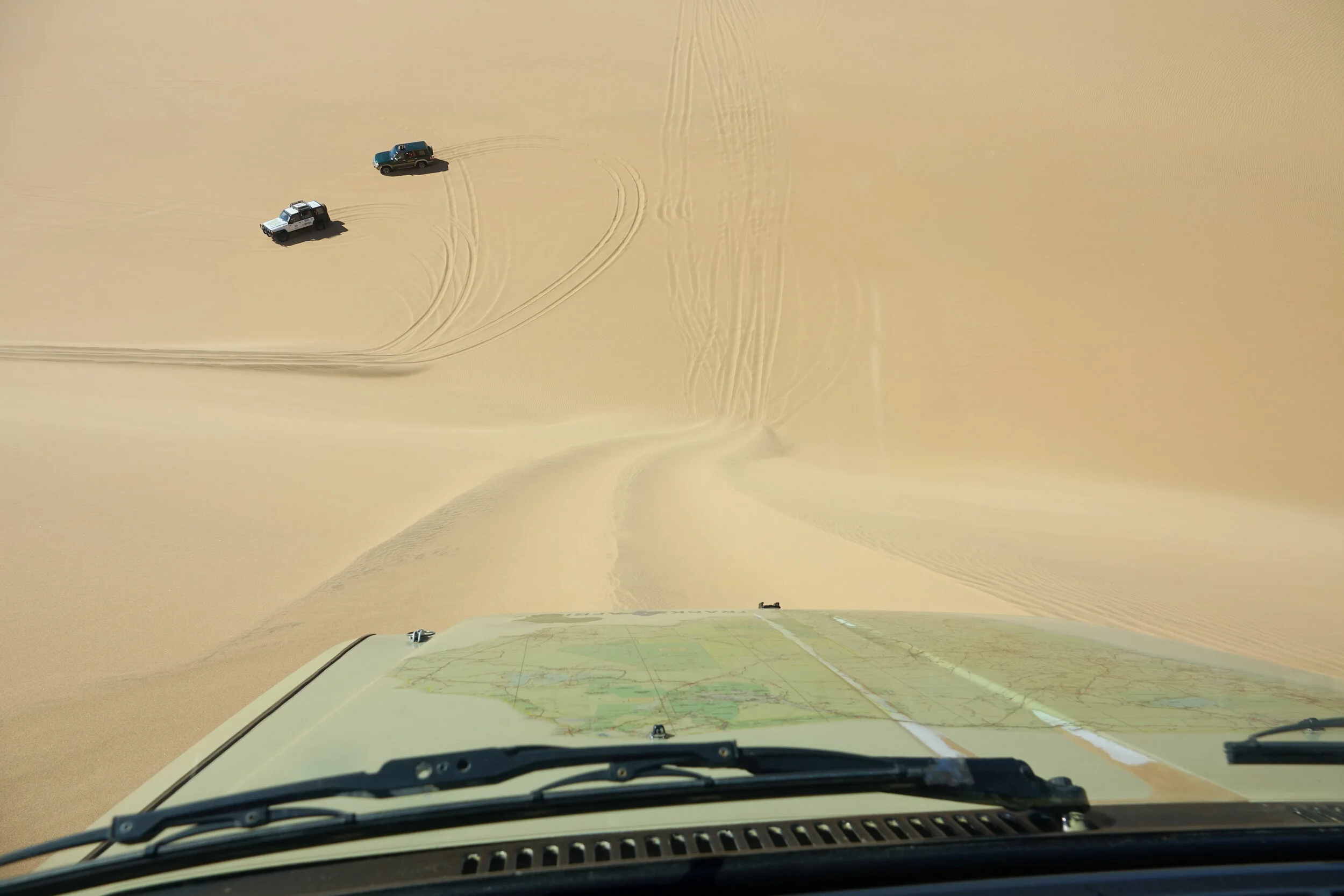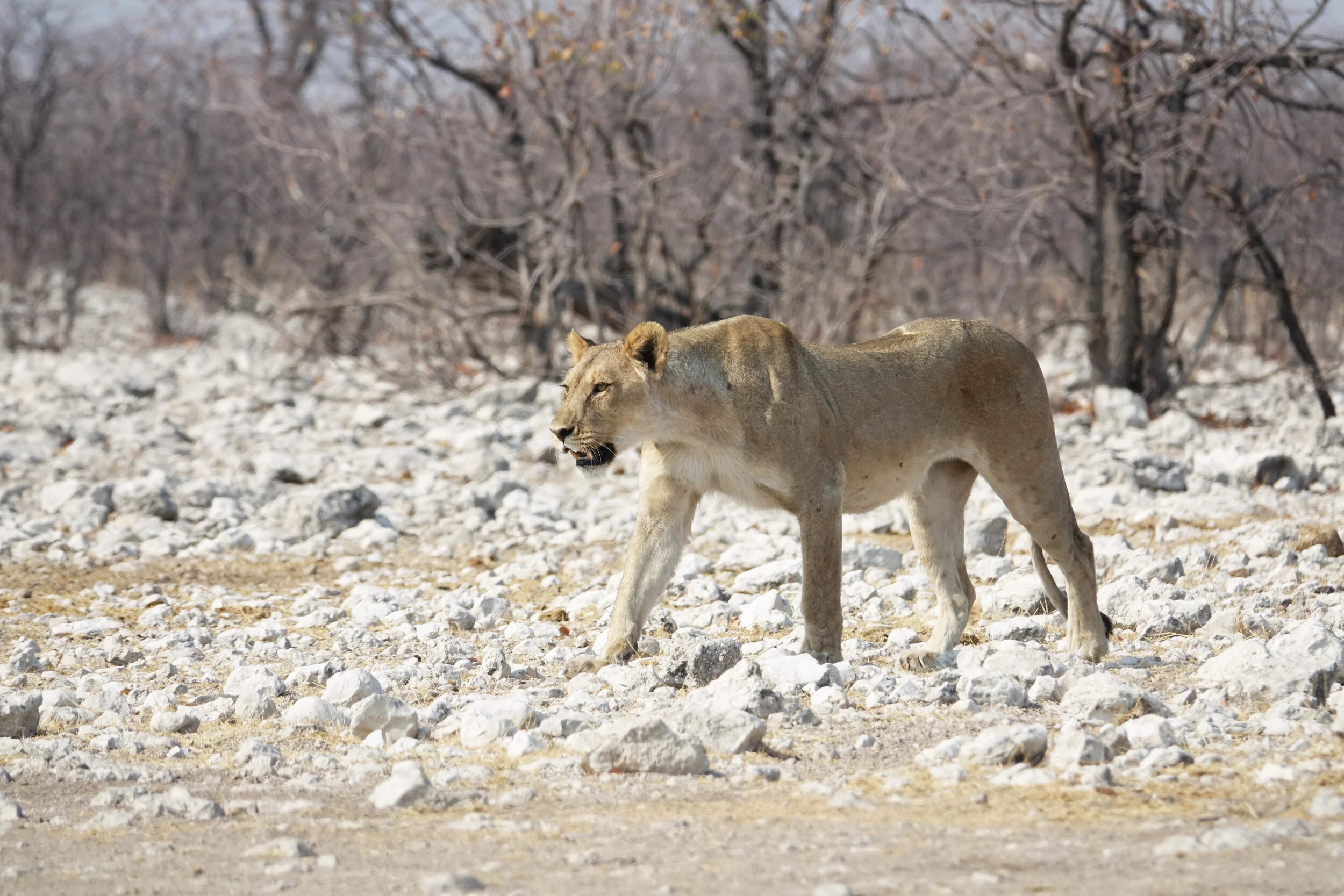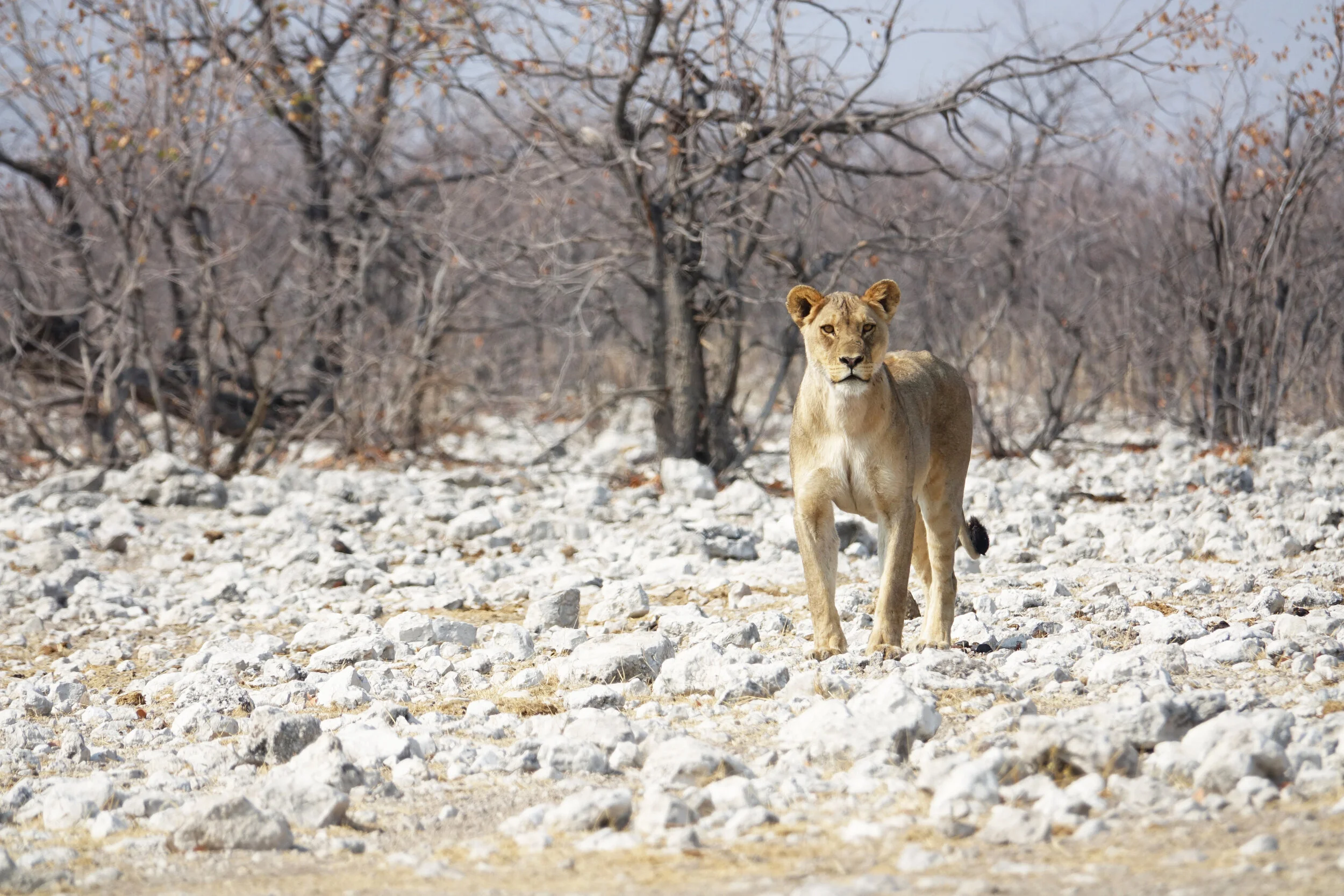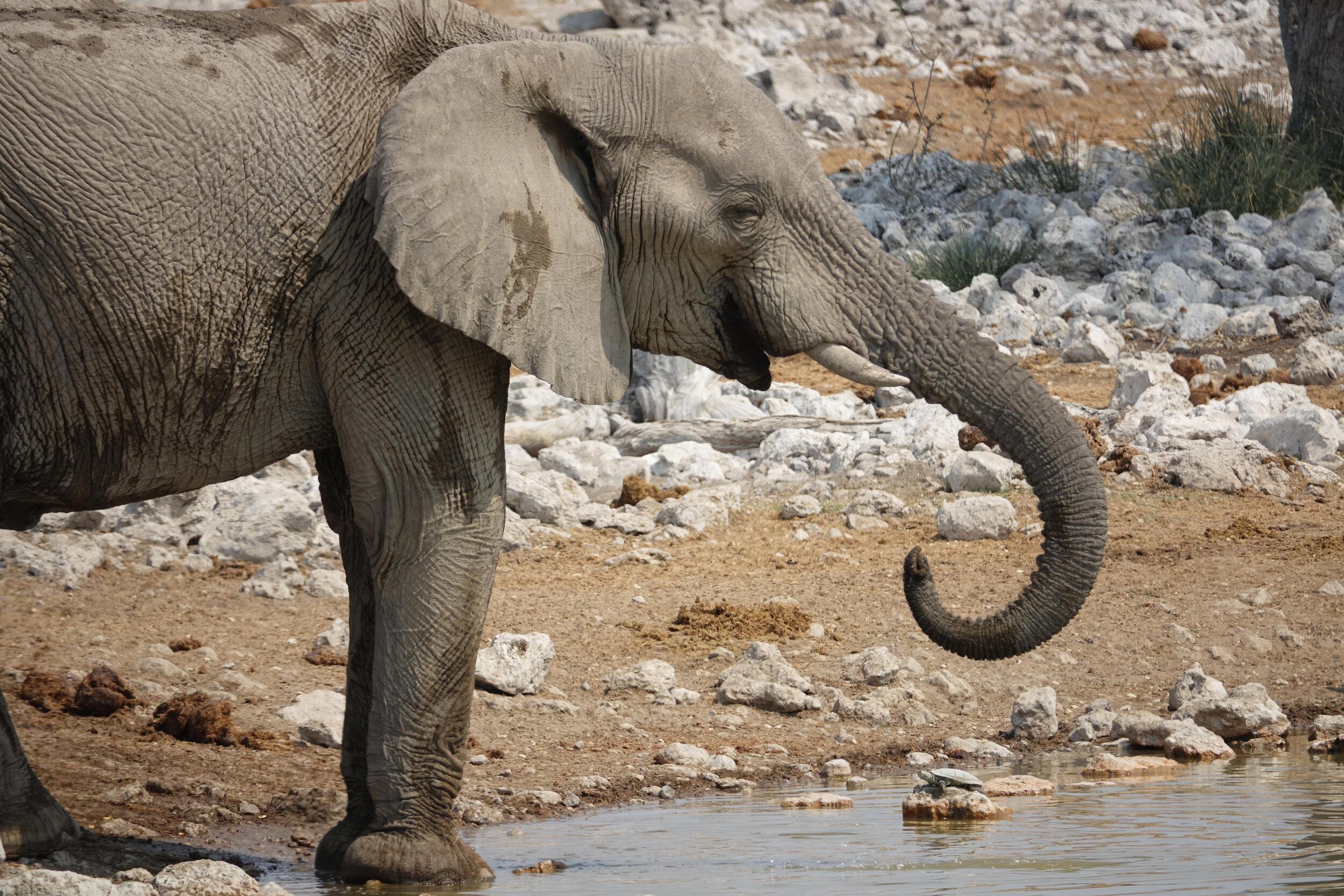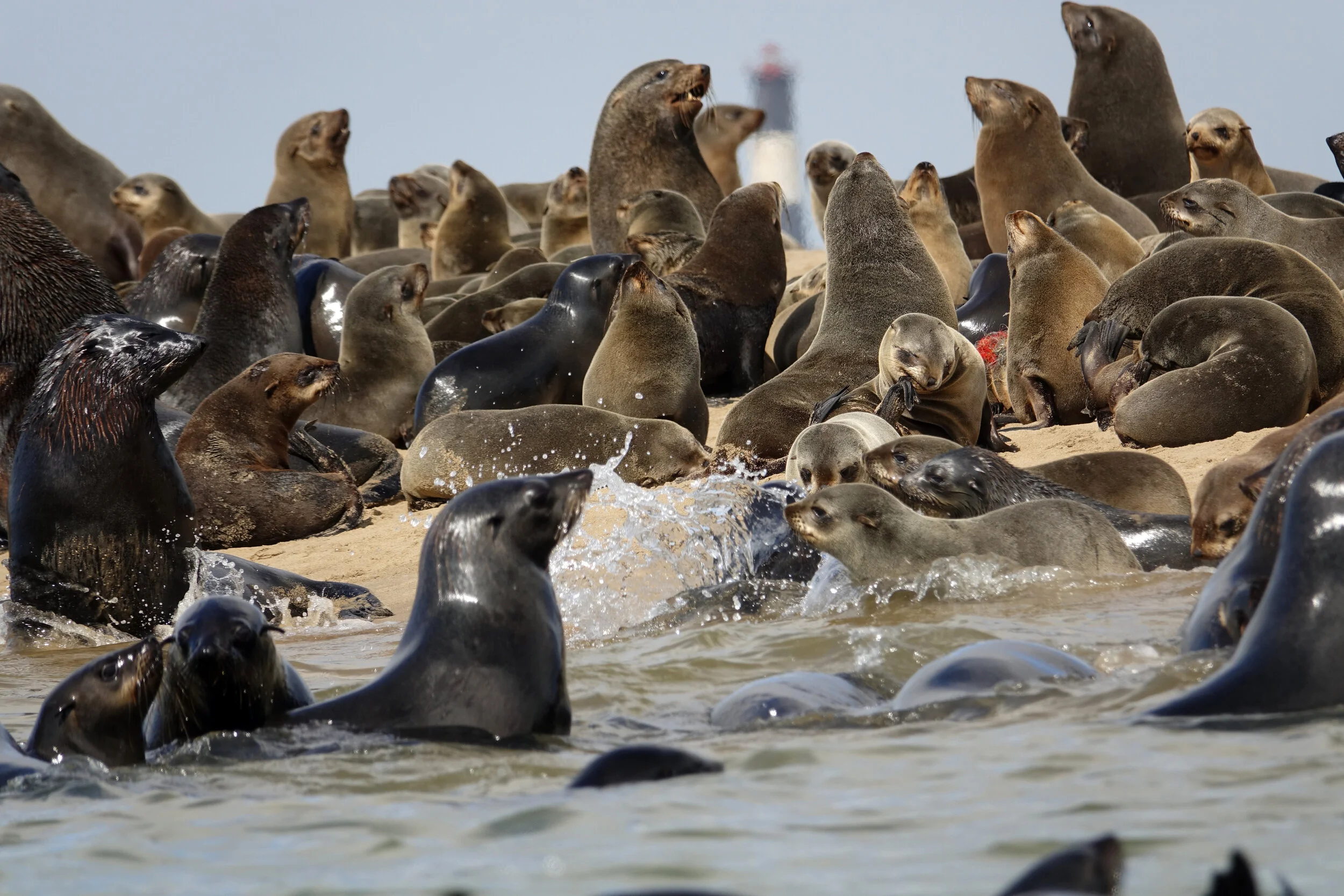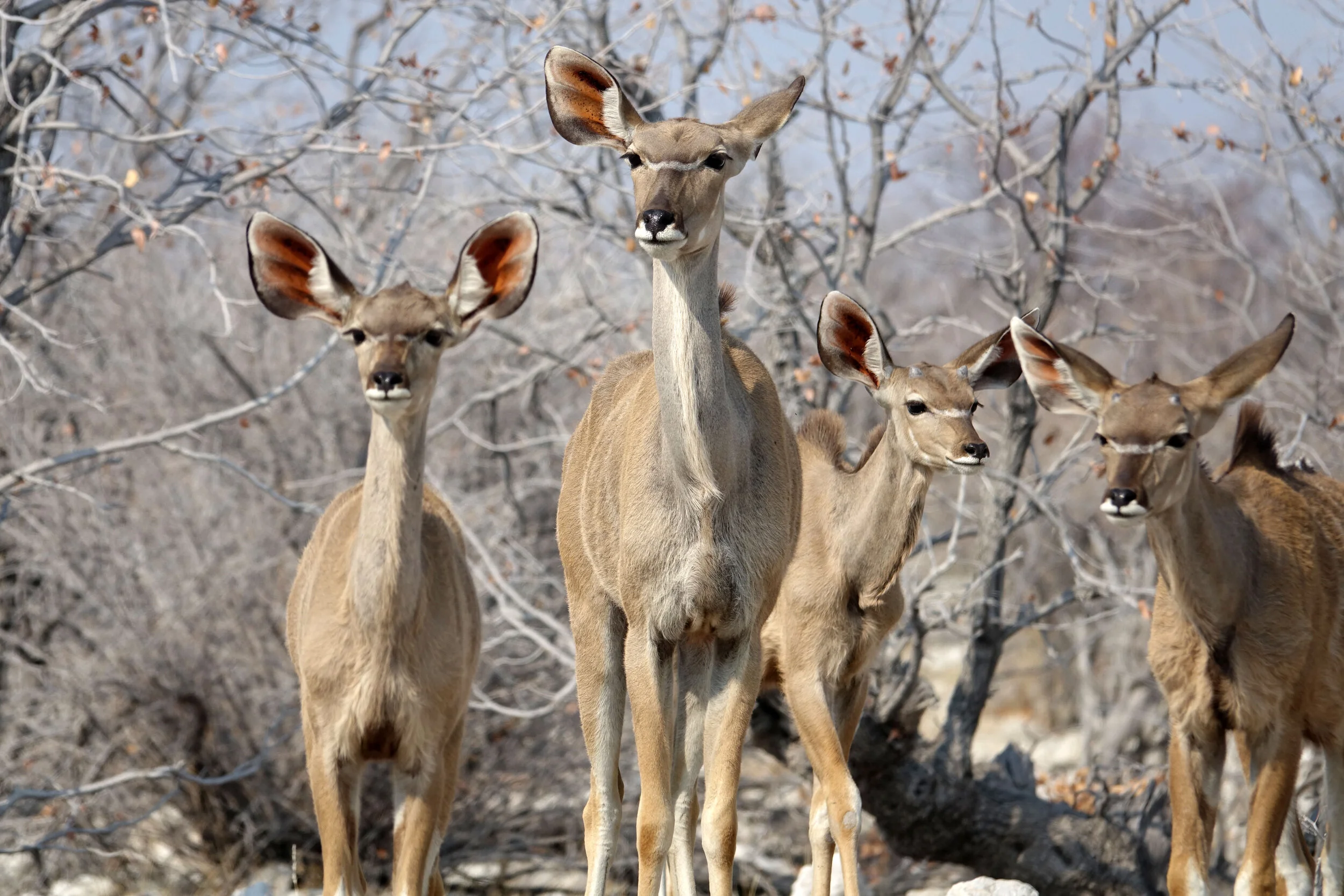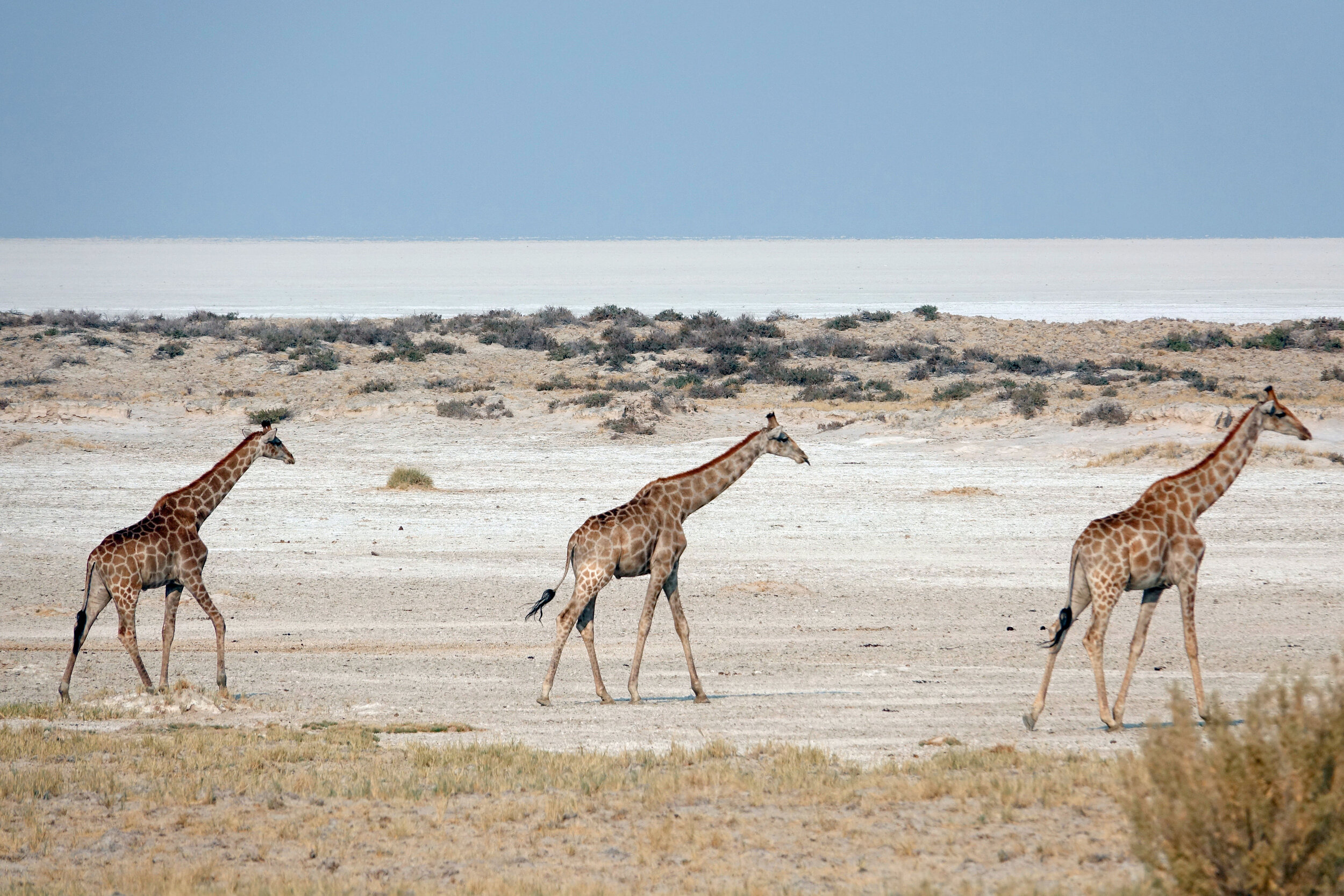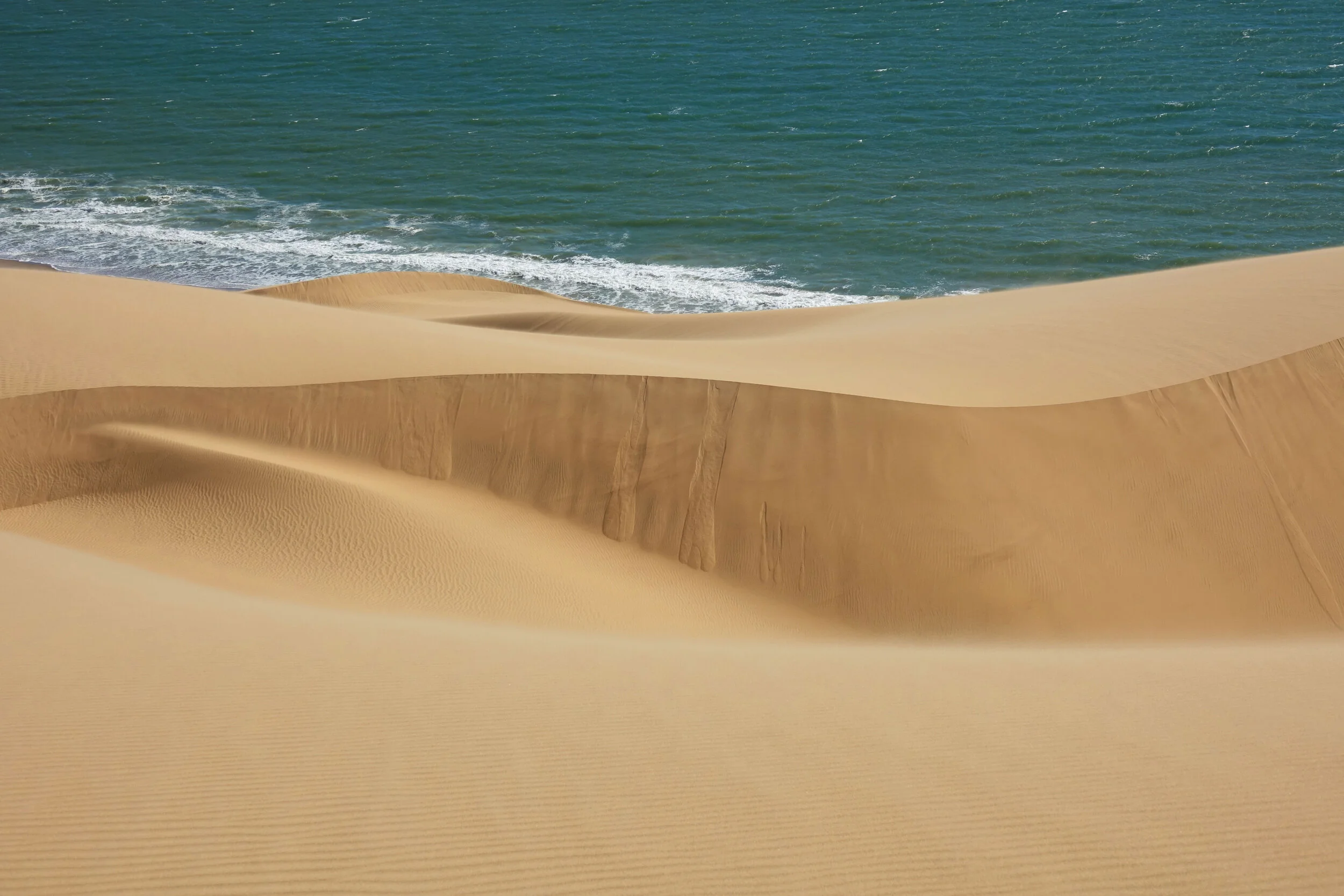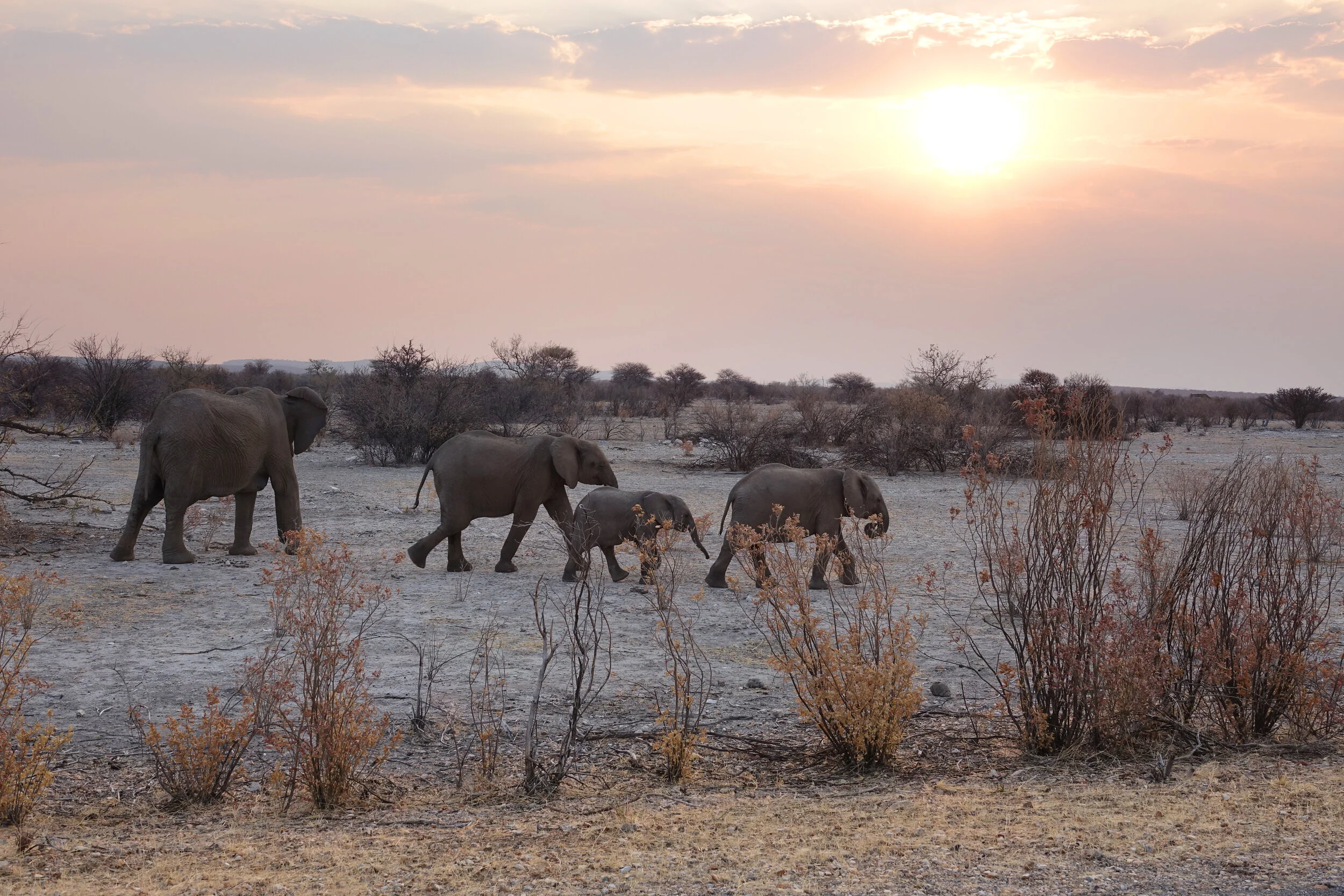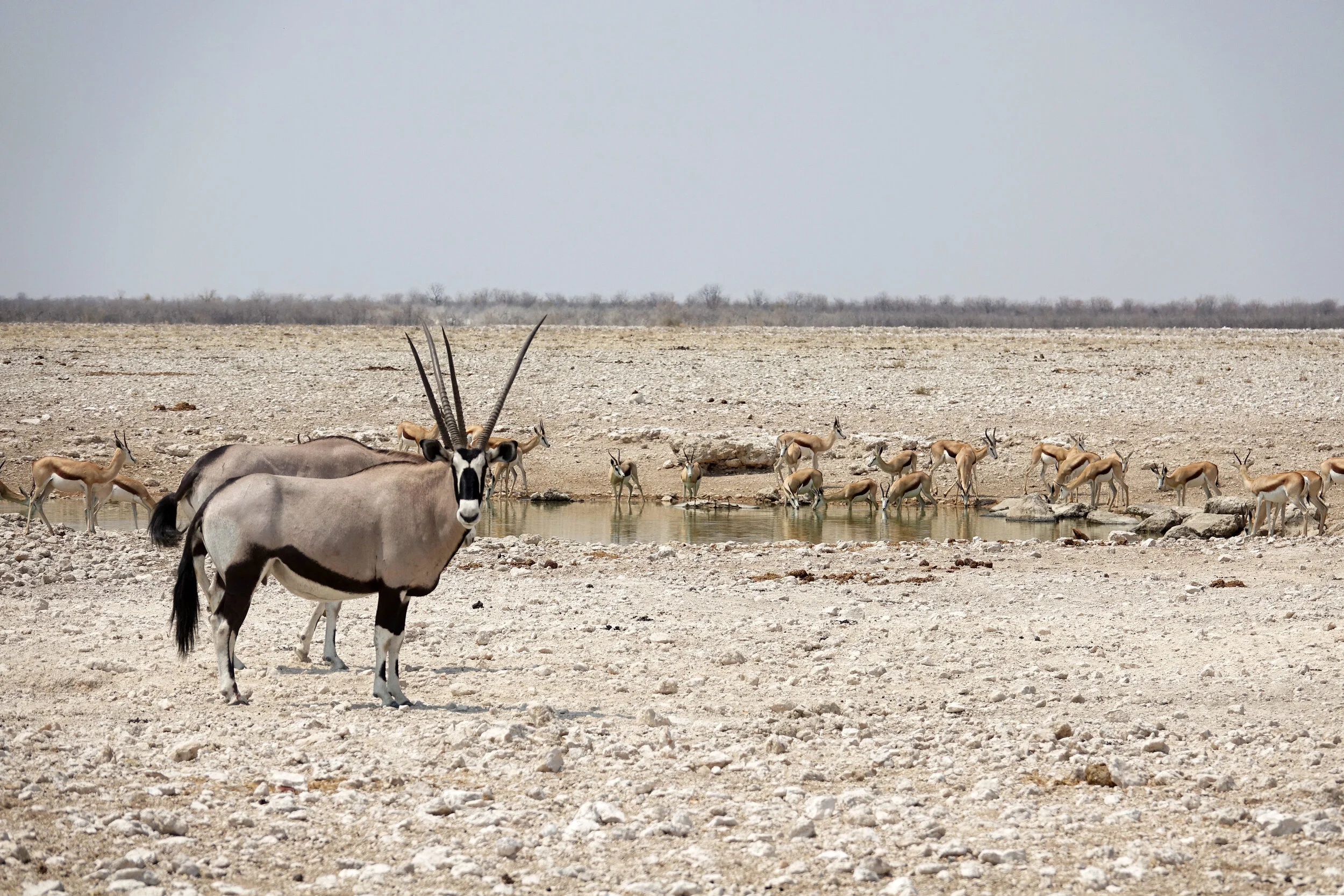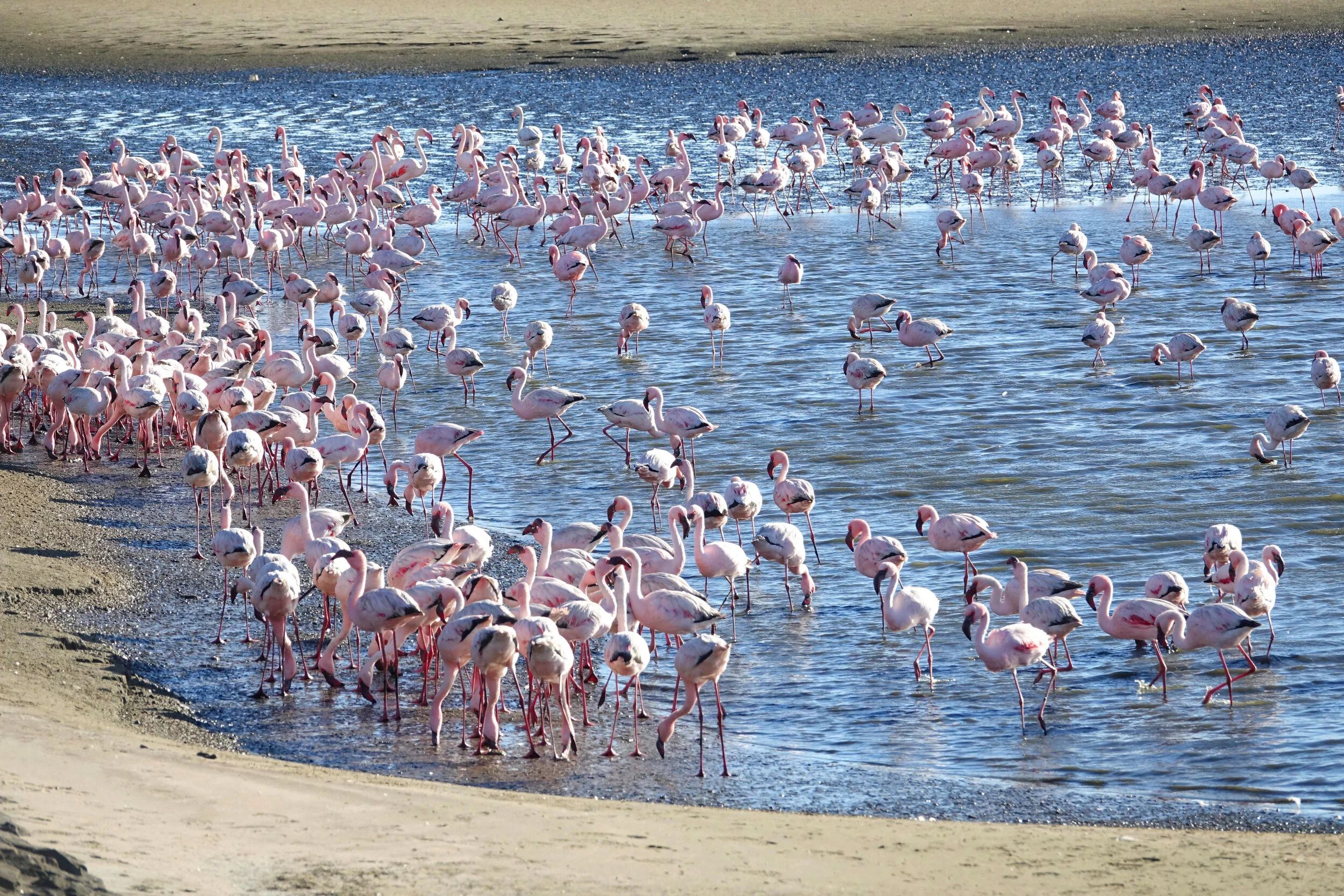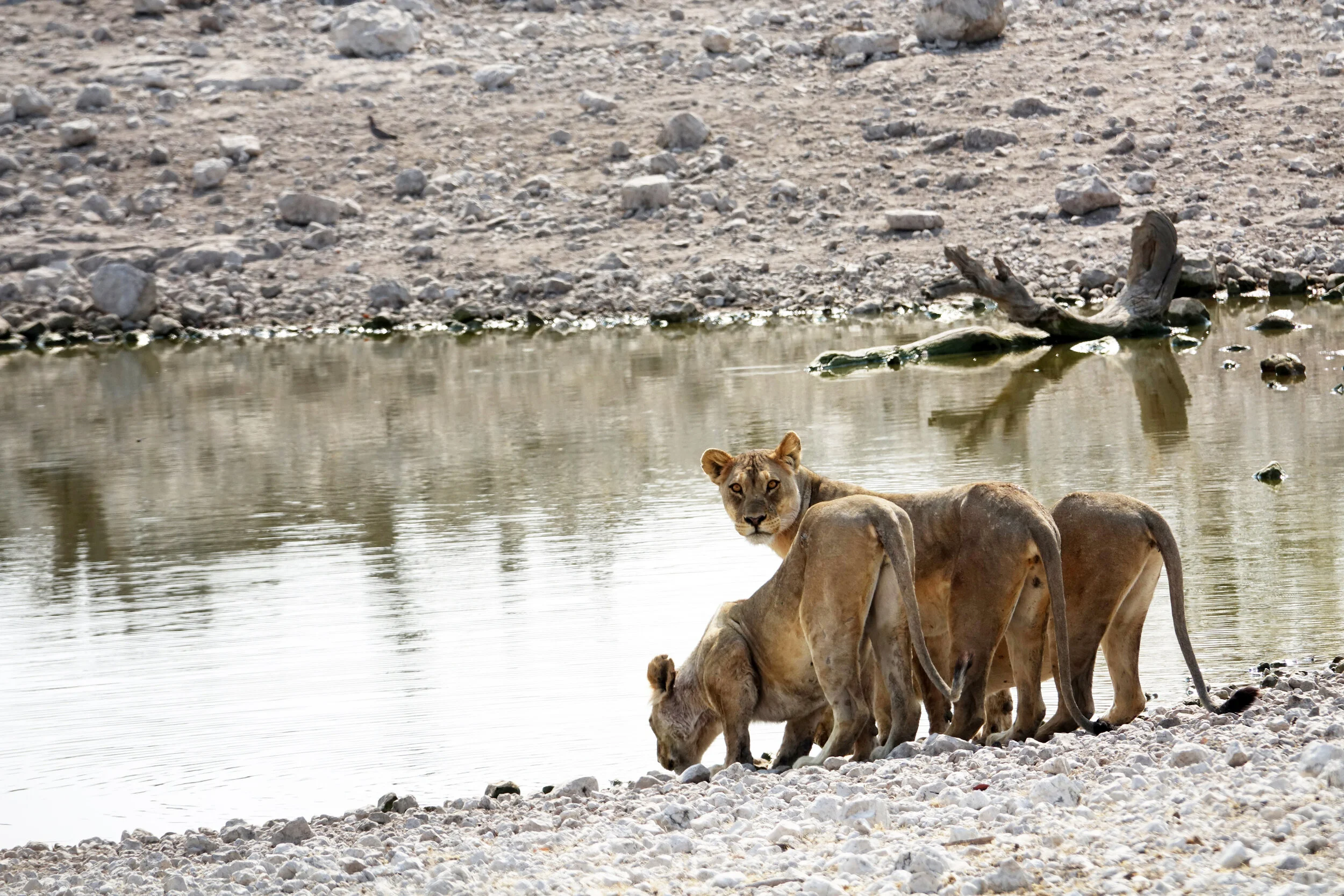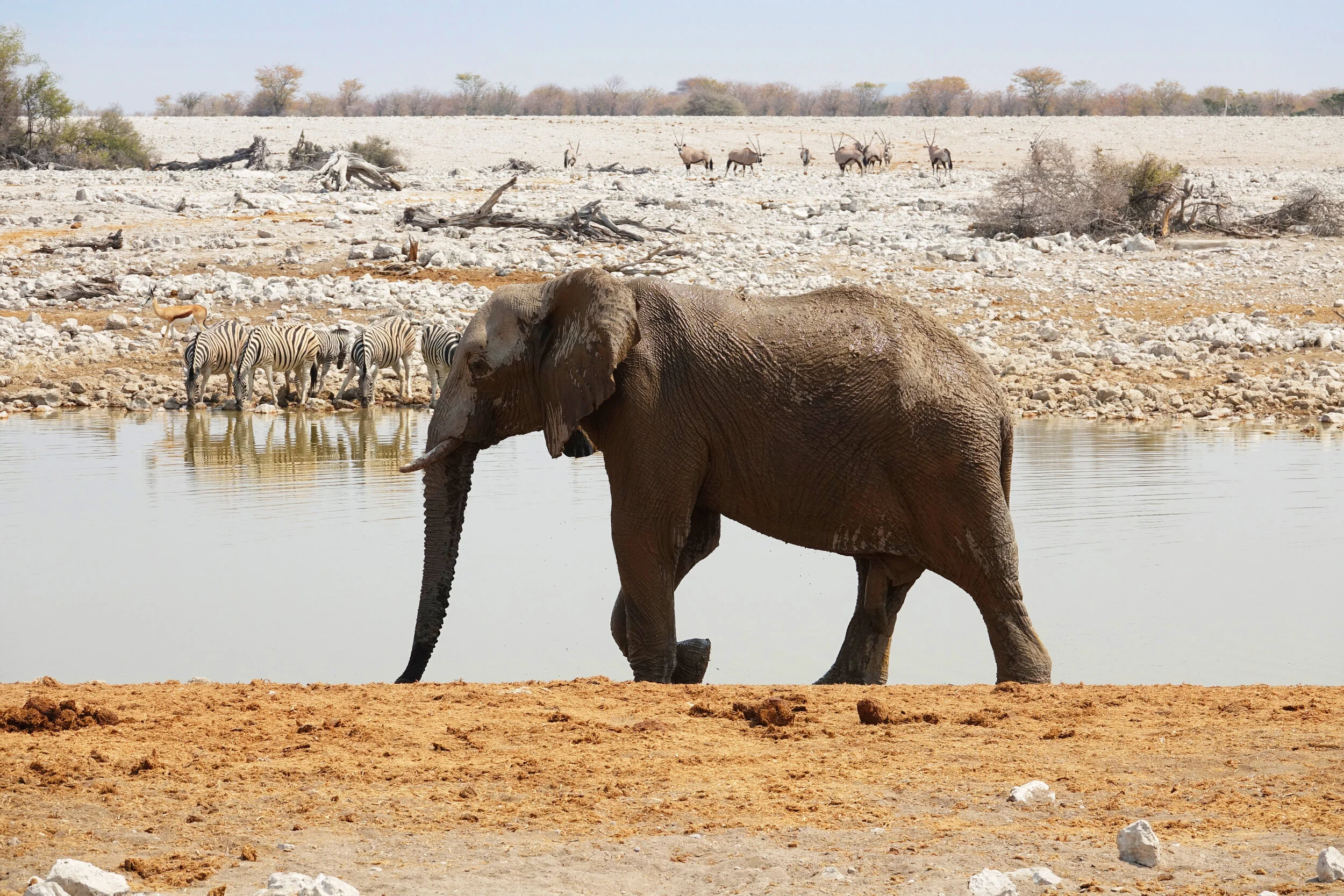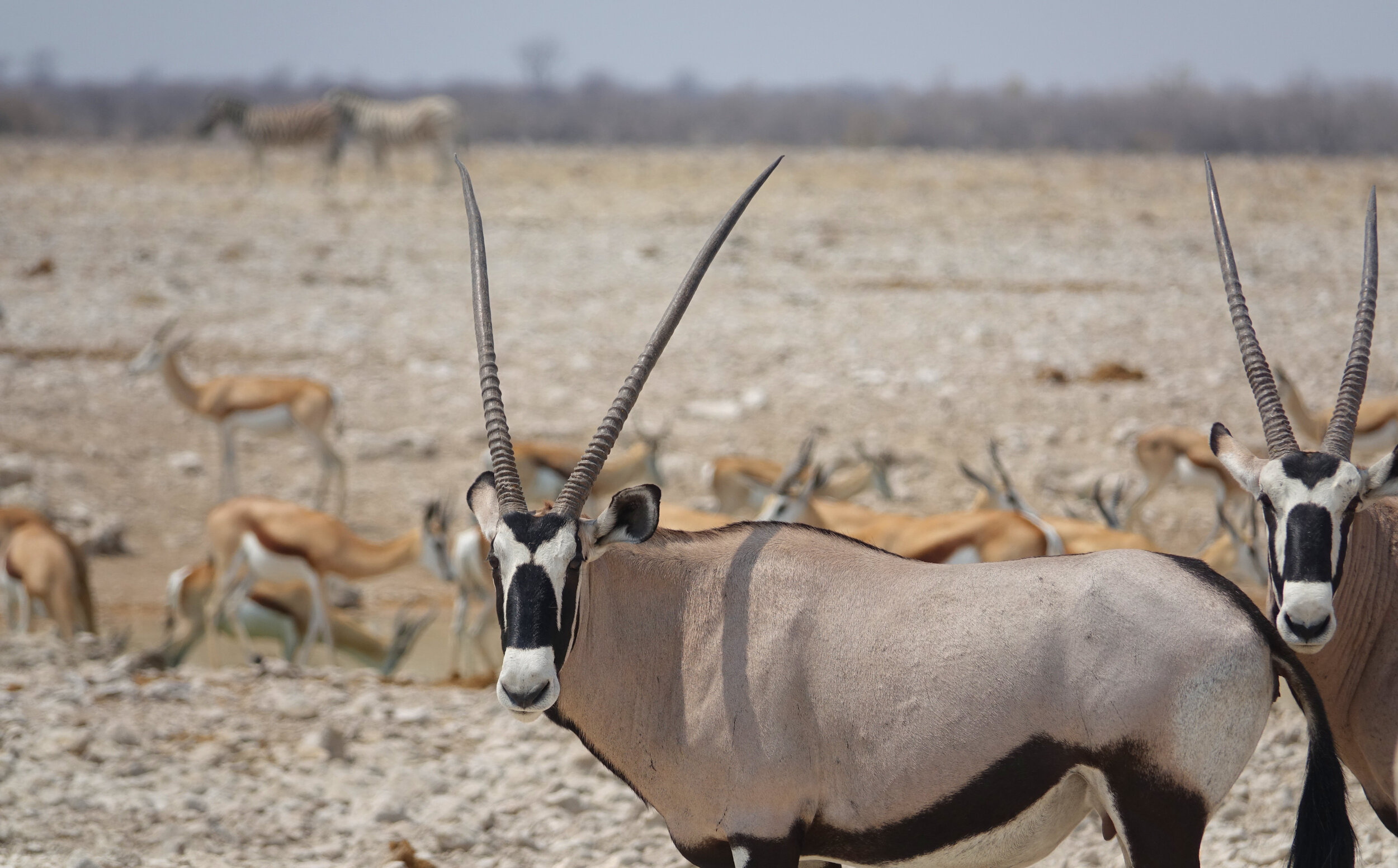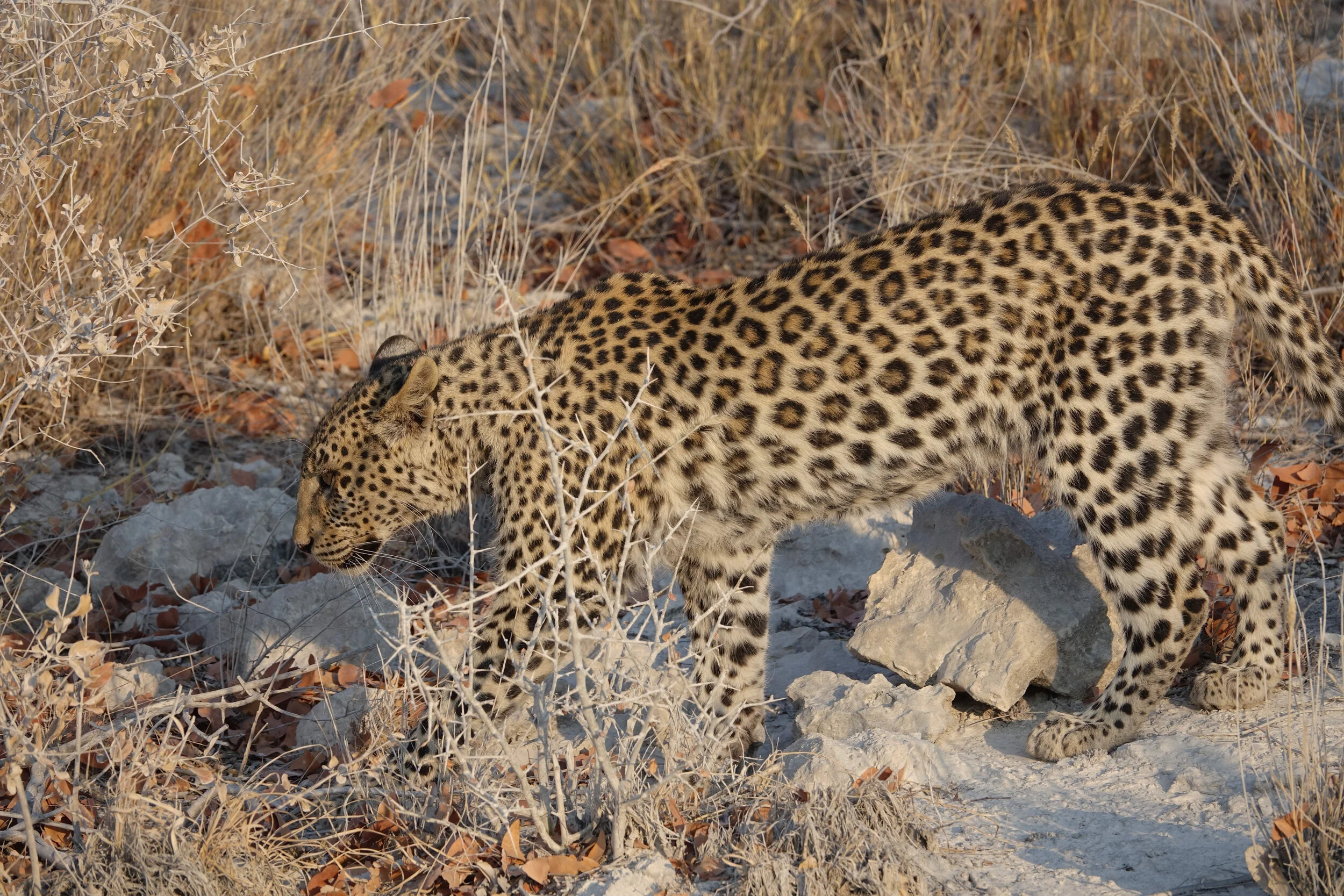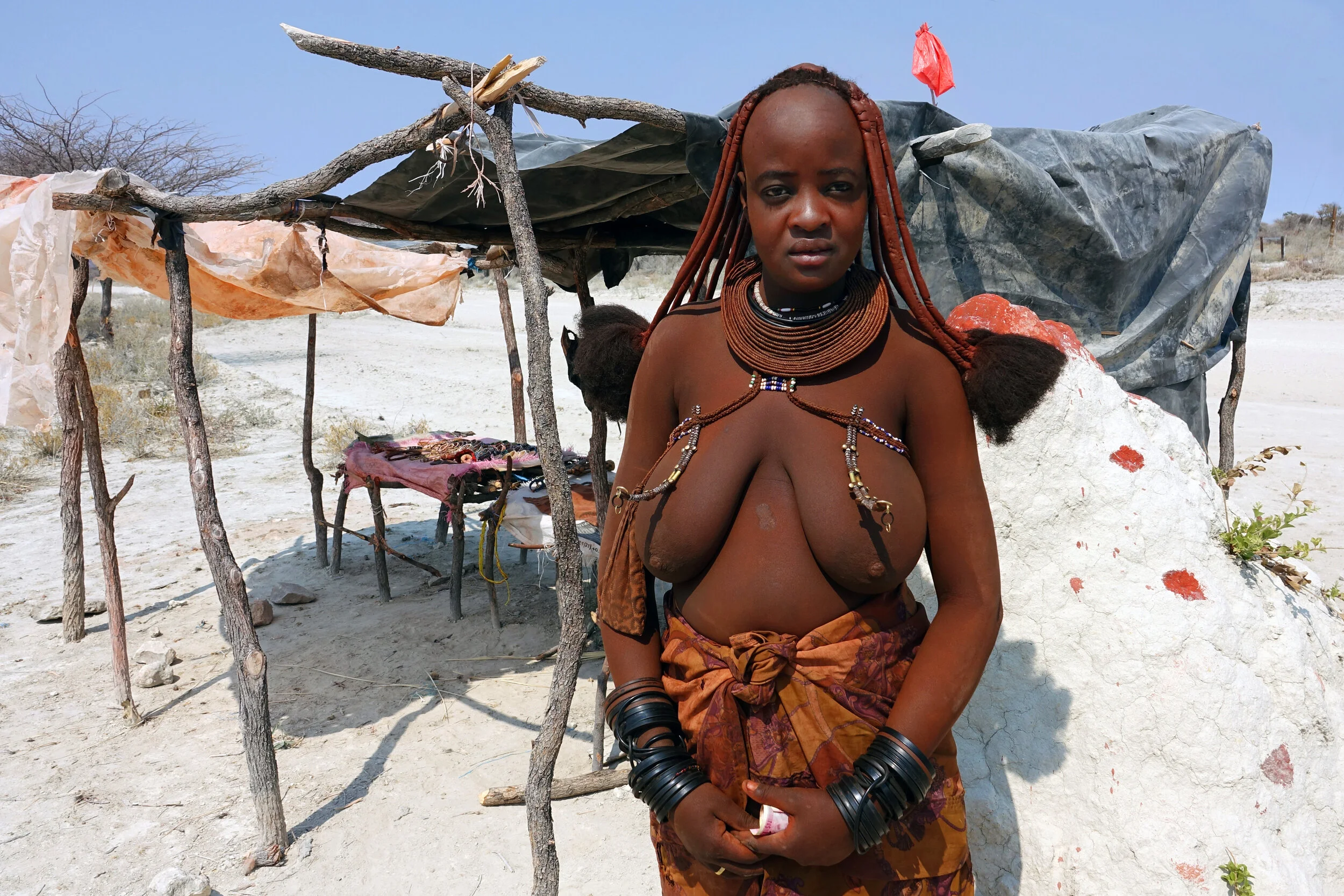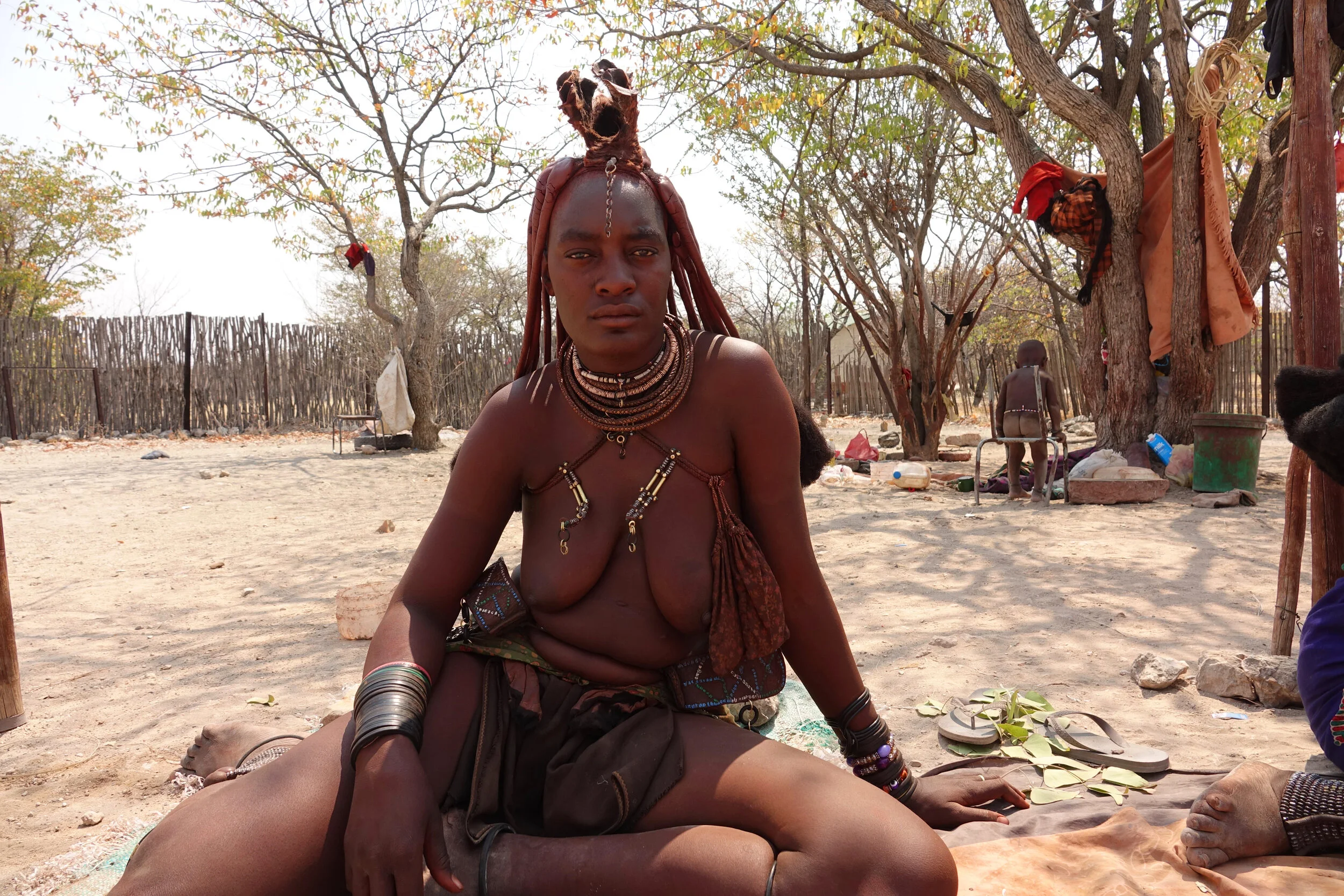NAMIBIA, AFRICA
I spent three weeks traveling throughout Namibia on a roadtrip with a friend. We rented a car in Windhoek, the capital city, and made our way south to Sossusvlei, a very remote salt and clay pan surrounded by some of the highest sand dunes in Africa located in the southern part of the Namib Desert. It’s endured arid conditions for roughly 80 million years and is the oldest desert in the world containing some of the world’s driest regions. Sossusvlei is the most remote area of the Namib-Naukluft National Park and can only be reached by 4WD vehicles where the gravel road ends and sand begins. We climbed “Big Daddy” the highest dune in the Sossusvlei and ran down to the bottom. At the base, is Deadvlei “dead valley”, a white clay pan.
Afterwards, we made our way north by driving through The Skeleton Coast and stopped for a few nights in Sandwich Harbour, a thin stretch of coast where giant dunes meet the Atlantic ocean. I kayaked with over 30,000 seals in Walvis Bay, a port town on the Skeleton Coast. Sheltered by the Pelican Point sand spit, its tidal lagoon is home to abundant birdlife including over 20,000 flamingos. We then drove through Damaraland in the north central, very remote part of the country on our way to Etosha where Himba tribe people reside, living in northern Namibia, just south of Angola.
Before returning to the capital city, we drove north to go on safari in Etosha located in the Kunene region. Etosha has a savanna desert climate and spans an area of over 8,600 square miles. It gets its name from the large Etosha salt pan which is almost entirely within the park. Etosha is home to hundreds of species of mammals, birds and reptiles, including several threatened and endangered species such as the rhinoceros. We saw zebras, giraffes, elephants, lions, oryx, springboks, kudus, wildebeests, ostriches, a leopard and a white rhinoceros.
Female leopard at Etosha, Namibia


